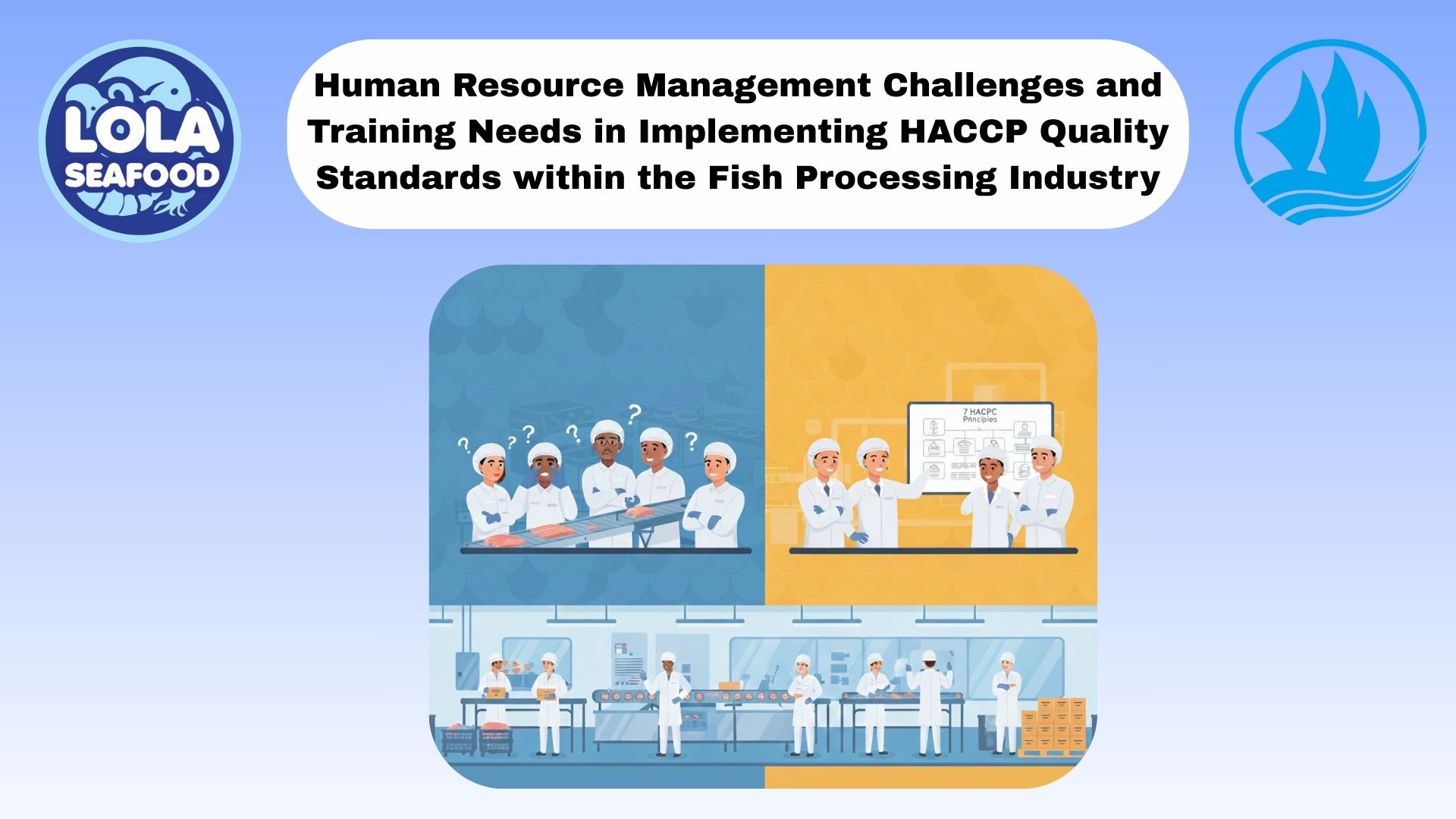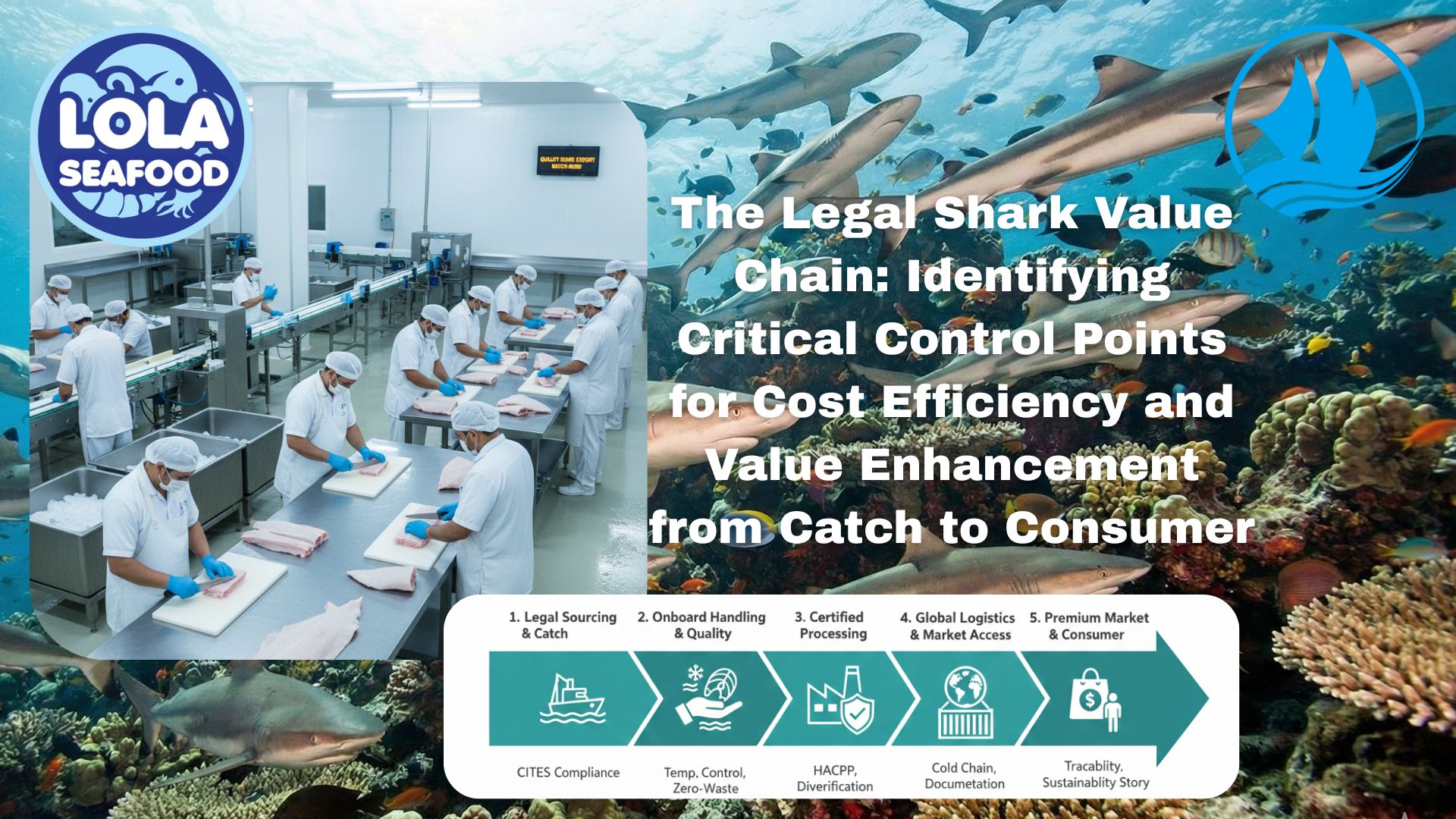Shark Fillet: Production, Nutritional Value, and Sustainability Issues
By. Kusni - 06 Nov 2025
kelolalaut.com Sharks, known scientifically as members of the class Chondrichthyes, are cartilaginous fish found in marine ecosystems around the world. Among the various uses of sharks, one of the most common products is shark fillet, locally known in Indonesia as fillet hiu or fillet cucut. Shark fillet is valued for its firm texture, mild flavor, and versatility in cooking. However, behind its commercial appeal lie important discussions about food safety, sustainability, and the ethical implications of shark fishing. This article explores the characteristics, processing methods, nutritional aspects, and environmental concerns associated with shark fillets.
1. Characteristics and Species Used
Shark fillets are typically obtained from medium to large shark species such as Carcharhinus limbatus (blacktip shark), Sphyrna lewini (scalloped hammerhead), and Prionace glauca (blue shark). In Indonesia and other tropical countries, cucut is a common term for smaller coastal shark species caught as bycatch in gillnet or longline fisheries.
The flesh of sharks is generally light-colored, dense, and boneless, since sharks have a cartilaginous skeleton instead of true bones. This gives shark fillet a firm yet tender texture after cooking. When fresh, the fillet has a slightly sweet and neutral flavor, making it suitable for grilling, frying, or stewing. However, if not properly processed, shark meat can develop an unpleasant ammonia-like odor due to the breakdown of urea in the muscle tissue.
2. Processing of Shark Fillet
The processing of shark fillet involves several key steps to ensure product quality and safety. Once landed, the shark must be handled quickly to prevent spoilage. The fish is first bled and gutted, then washed thoroughly to remove blood and internal organs that may cause contamination. Afterward, the head, fins, and tail are removed, and the remaining body is cut into fillets along the sides of the backbone.
Because shark meat naturally contains high levels of urea, proper soaking or washing in cold, slightly acidic water (often with lemon juice or vinegar) is necessary to remove the smell and improve taste. The fillets are then trimmed, deboned, and sometimes frozen or smoked depending on the intended market. In export industries, vacuum packing is often used to extend shelf life and preserve freshness.
In traditional markets across Southeast Asia, shark fillets are often sold fresh or dried. Dried shark fillets, known as ikan asin cucut in Indonesia, are made by salting and sun-drying the meat, producing a flavorful and long-lasting product commonly used in local cuisines.
3. Nutritional Composition
Shark fillet is a high-protein, low-fat food source that provides essential nutrients for human health. On average, 100 grams of shark meat contains about 20–25 grams of protein, 1–2 grams of fat, and provides approximately 120–130 kilocalories. It is rich in essential amino acids, vitamin B12, and minerals such as selenium, phosphorus, and magnesium.
However, shark meat also poses potential health concerns due to the accumulation of heavy metals, especially mercury (Hg), cadmium (Cd), and arsenic (As). As apex predators, sharks occupy a high trophic level in the marine food chain, which makes them susceptible to bioaccumulation of toxins. Consuming large amounts of shark meat over time may therefore pose health risks, particularly for pregnant women and children.
To minimize these risks, food safety authorities in many countries have set limits on mercury levels in fish products. Consumers are advised to eat shark fillet in moderation and choose fish from verified, sustainable sources.
4. Economic and Cultural Significance
In many coastal communities, especially in Indonesia, the Philippines, and parts of South Asia, shark fillet contributes significantly to local livelihoods. Shark meat is an affordable source of animal protein and an important commodity for small-scale fishers. The entire shark is often utilized—meat for food, skin for leather, and fins for export—making it a valuable multipurpose resource.
In international trade, shark fillet is exported both fresh and frozen, mainly to East Asian and European markets. The global demand for shark products, however, has led to increasing pressure on shark populations. While some shark species are caught as bycatch, others are targeted specifically for their fins or meat, raising concerns about overfishing and illegal trade.
5. Sustainability and Conservation Issues
The harvesting of sharks for fillets is closely tied to global debates about marine conservation. Many shark species grow slowly, mature late, and produce few offspring, making them highly vulnerable to overexploitation. The International Union for Conservation of Nature (IUCN) lists several commercially important shark species as threatened or endangered.
Unsustainable fishing practices, such as finning (removing fins and discarding the body), have caused public outcry and led to stricter regulations in many countries. To ensure sustainability, several strategies are being promoted, including catch limits, species-specific management plans, and certification programs such as the Marine Stewardship Council (MSC). Consumers also play an important role by choosing products labeled as sustainably sourced.
.jpg)
The Impact of HACCP-Based Integrated Quality Management Programs on the Quality and Competitiveness of Fresh Demersal Fish Products
 and Employee Productivity on the Demersal Fish Processing Floor.jpg)
The Correlation Between Occupational Health and Safety (OHS) and Employee Productivity on the Demersal Fish Processing Floor

Human Resource Management Challenges and Training Needs in Implementing HACCP Quality Standards within the Fish Processing Industry





.jpg)